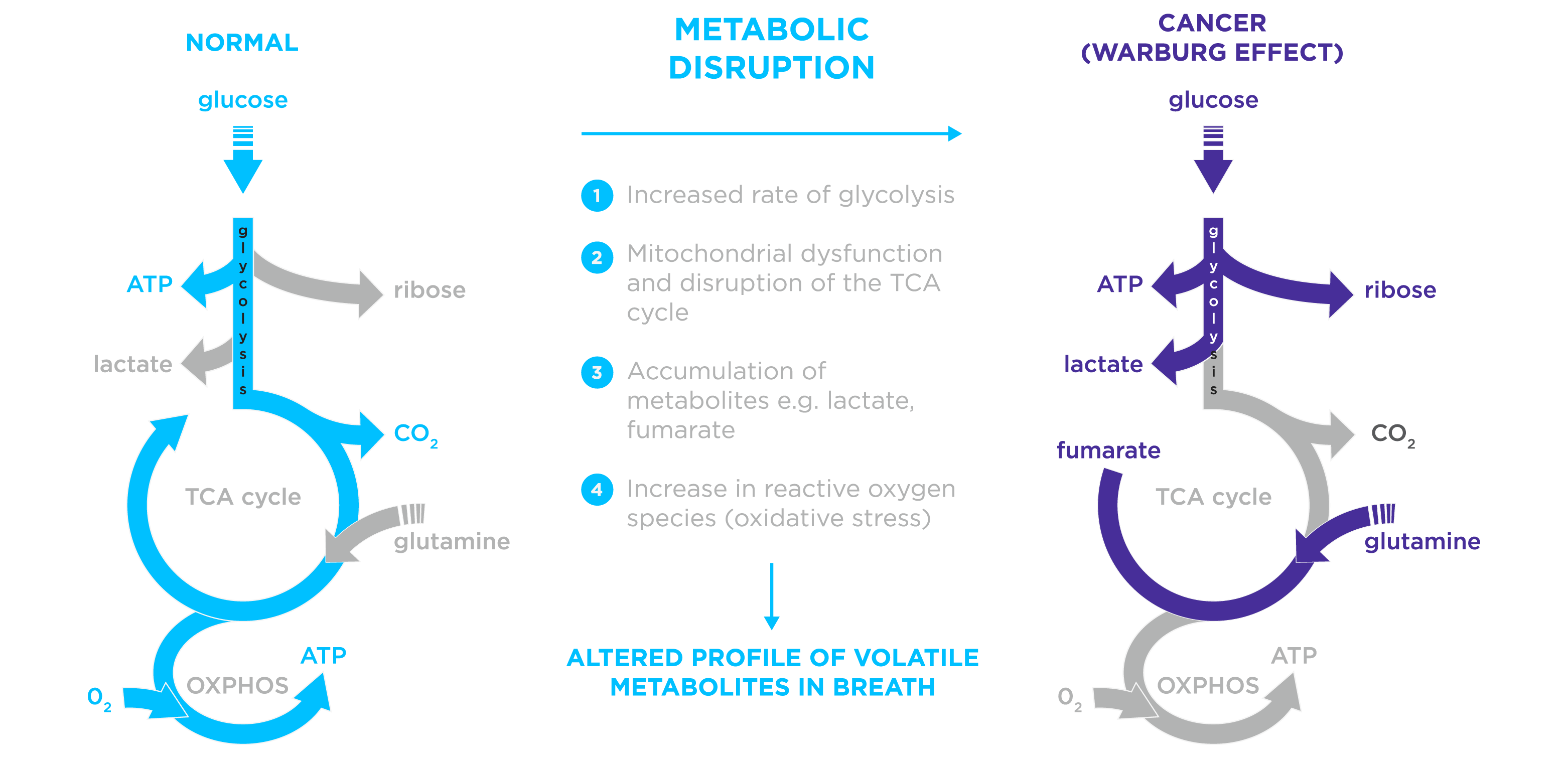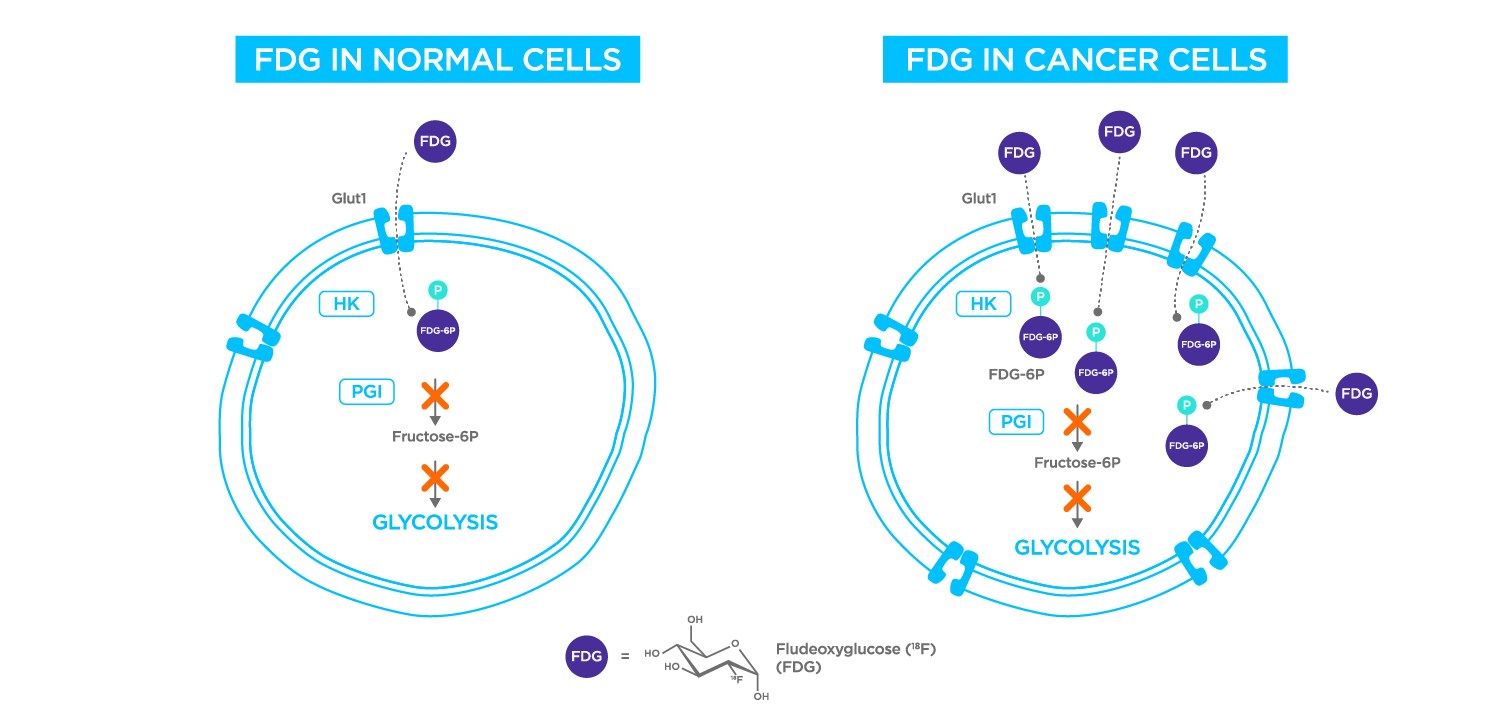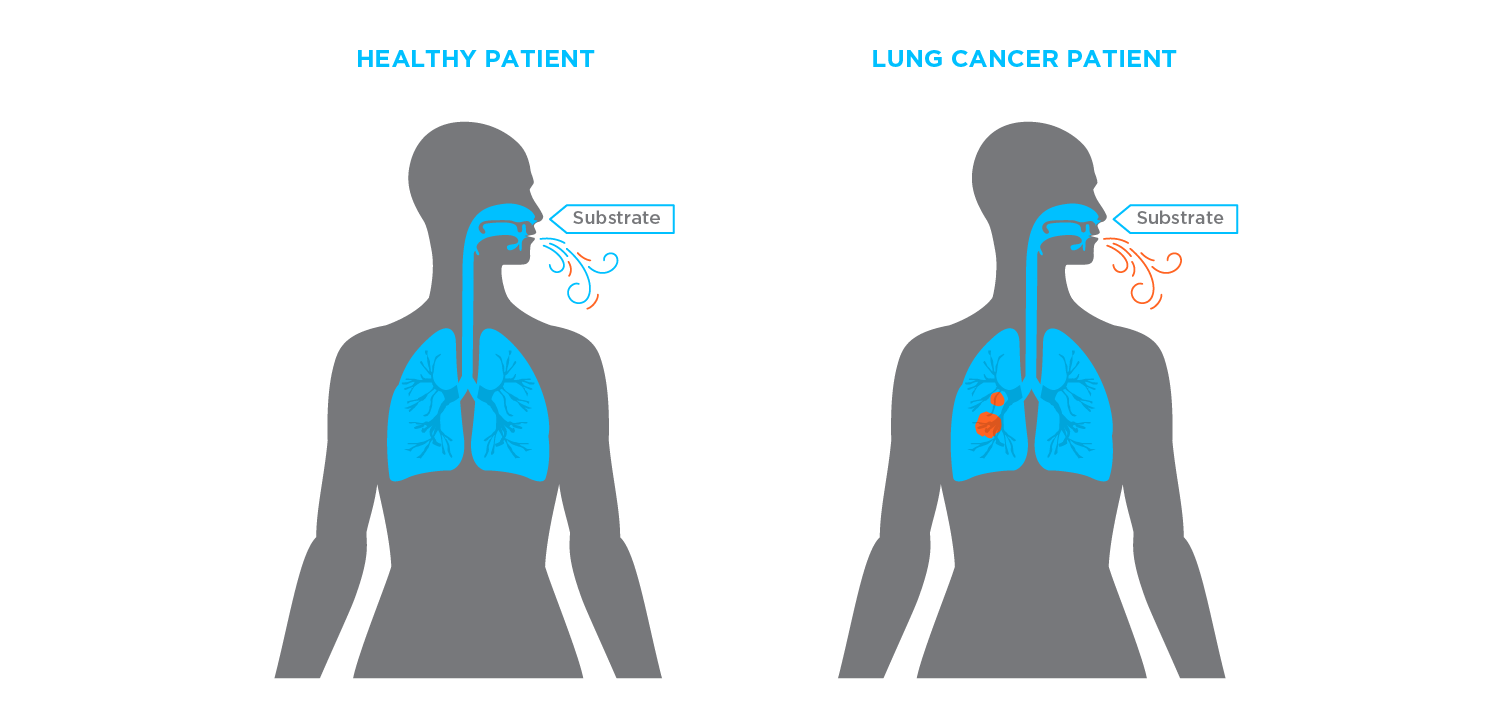Biomarkers from the Warburg effect could aid early cancer detection
Published on: 22 Jun 2021
In 1931, Otto Henrich Warburg received the Nobel Prize in recognition of his work on the discovery of the nature and mode of action of the respiratory enzyme. This work led to the classification of a phenomenon known as, ‘the Warburg effect’ – defined as a form of modified cellular metabolism found in certain cells.
When cells are multiplying prolifically, as cancerous cells can do, they require vast amounts of energy to sustain this rapid growth. Figure 1 below shows how healthy cells produce energy through aerobic respiration and the stages of glycolysis, the tricarboxylic acid cycle (TCA cycle) and oxidative phosphorylation. When oxygen is limited, mitochondrial oxidative phosphorylation is restricted, and pyruvate is converted to lactate, however, this can occur even when oxygen is plentiful, and is known as aerobic glycolysis.

Cancer cells often adapt their metabolism, using aerobic glycolysis, to produce enough energy to ensure growth, maintenance and long-term survival.1 This is an inefficient process, the body needs to accumulate large quantities of simple carbohydrates to produce the amount of energy the cancer cells need.
The Warburg effect is not limited to cancerous cells. Haleem et al. observed that the Warburg effect operates in rapidly dividing cells in both normal and pathological states.2 Additionally, aerobic glycolysis is the preferred metabolic program in cases when robust transient responses are needed. For example, a rapid increase in metabolism is needed during activation of T lymphocytes.3
Positron Emission Tomography (PET) scans are commonly used to help diagnose cancers, using the Warburg effect to show both size and spread of cancerous cells. A radioactive drug, known as a radiotracer (often fluorodeoxyglucose (FDG)), is injected into the patient prior to the scan, it then travels through the body in the same way as glucose but cannot be broken down. The radioactive glucose molecule is trapped in the high metabolizing cells, and via the PET scan, highlights areas where there is increased glucose uptake, which is usually linked to glycolytic activity.4

The Warburg effect represents a significant shift in cellular metabolism with notable effects on the balance of metabolites within cancer cells. Breath Biopsy® collects and analyzes volatile organic compounds (VOCs) on breath, which are related to metabolic processes throughout the body. The use of FGD in PET scanning demonstrates how metabolism can be used to detect cancer and it is plausible that changes to VOCs on breath could be used in a similar manner to discover cancer biomarkers.
FDG is also an example of an external compound which is administered to provide high contrast probing of cancer metabolism. However, a PET scan involves an invasive injection, significant preparation by the patient and then a slow and uncomfortable scanning process that requires having to stay completely still for up to 60 minutes within the scanner.
In combination with Breath Biopsy, an EVOC® Probe could be developed to follow a similar but contrastingly non-invasive approach. Figure 3 shows how a patient could be assessed for tumor presence by ingesting a probe and taking a simple breath test to measure the abundance of the probe and its products on breath.

EVOC Probes are exogenous VOCs (EVOCs), which originate outside the body but interact in a well characterized way with specific metabolic processes. An EVOC Probe that was sensitive to the Warburg effect or to other metabolic changes in cancer cells could provide a highly sensitive and non-invasive means to help detect cancer even in the early stages.
Earlier detection of cancer is vital to increasing cancer survival.5 A shift in metabolic processes is one of the earliest signs of cancer and becomes more pronounced as the disease develops. Breath tests are well suited for early detection and could be developed for use in non-invasive screening of cancer.
Discover more about biomarkers for cancer diagnosis
References
- Liberti et al. (2016) The Warburg Effect: How Does it Benefit Cancer Cells? Trends in biochemical sciences, 41(3), 211–218. DOI: 10.1016/j.tibs.2015.12.001
- Abdel-Haleem et al. (2017) The Emerging Facets of Non-Cancerous Warburg Effect Frontiers in endocrinology 8, 279. DOI: 10.3389/fendo.2017.00279
- Medzhitov, R. (2015) Bringing Warburg to lymphocytes Nat Rev Immunol 15, 598. DOI: 10.1038/nri3918
- Berger A. (2003) How does it work? Positron emission tomography BMJ (Clinical research ed.) 326(7404), 1449. DOI: 10.1136/bmj.326.7404.1449
- Abderrahman, B. (2019) Exhaled breath biopsy: a new cancer detection paradigm Oncology Central
Catch up on the presentations from the Breath Biopsy Conference 2024
